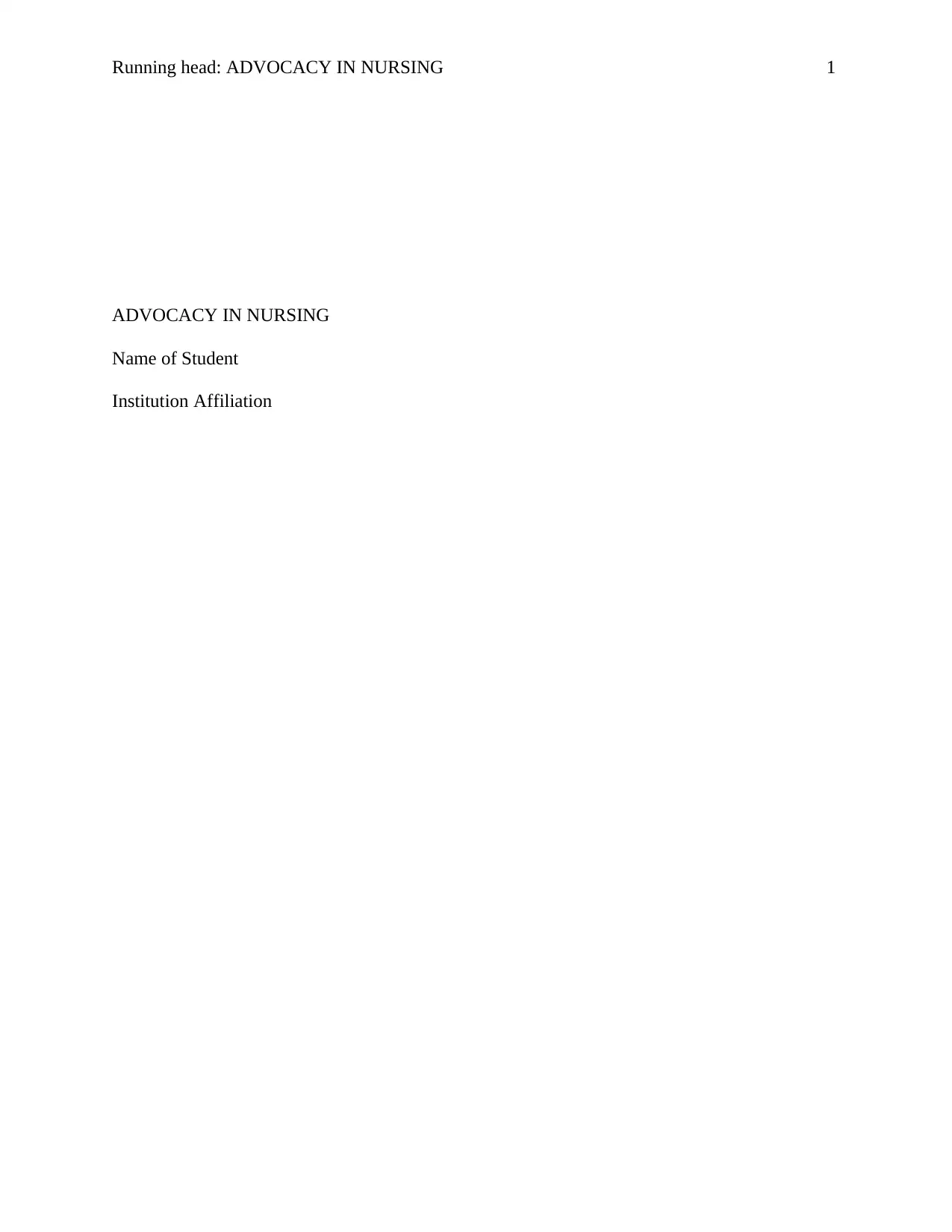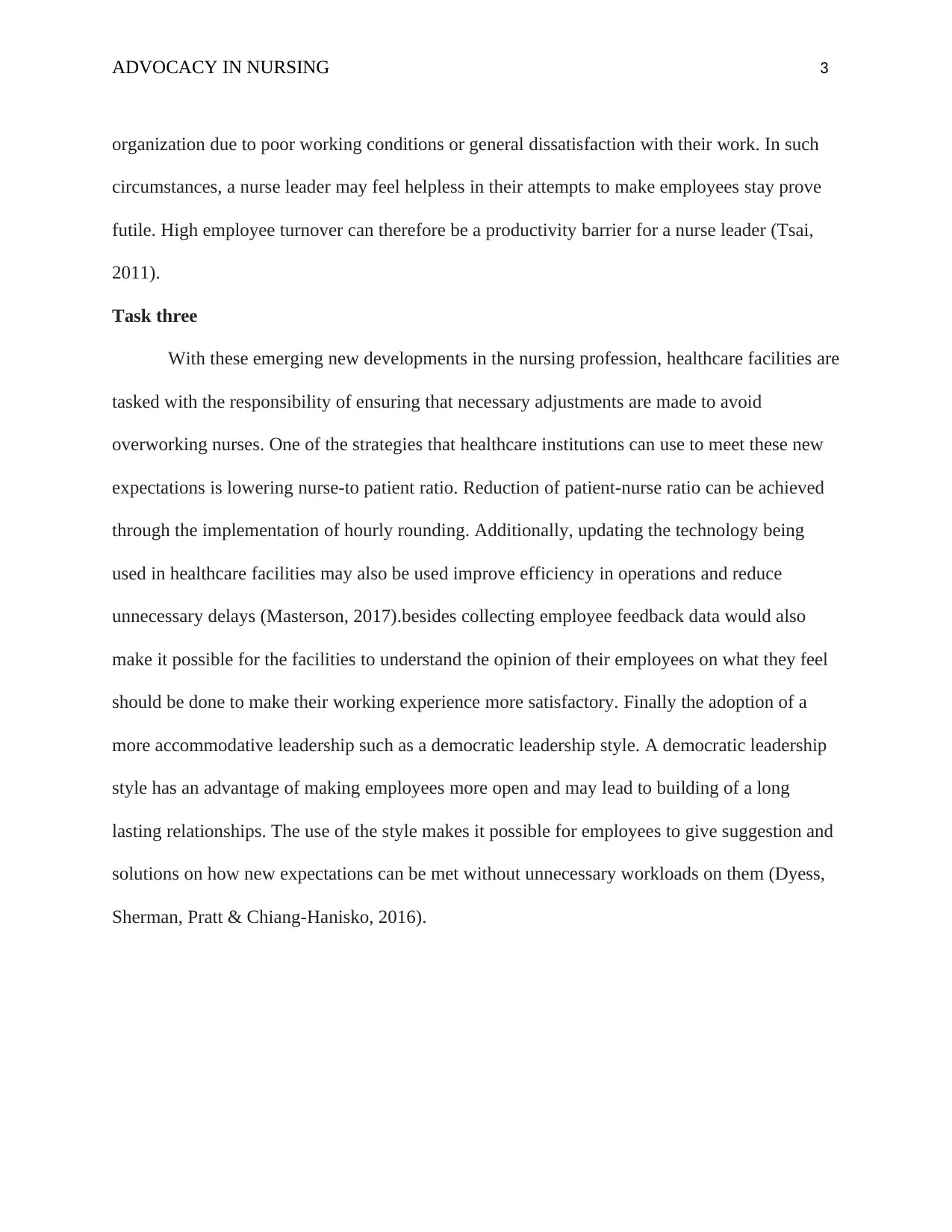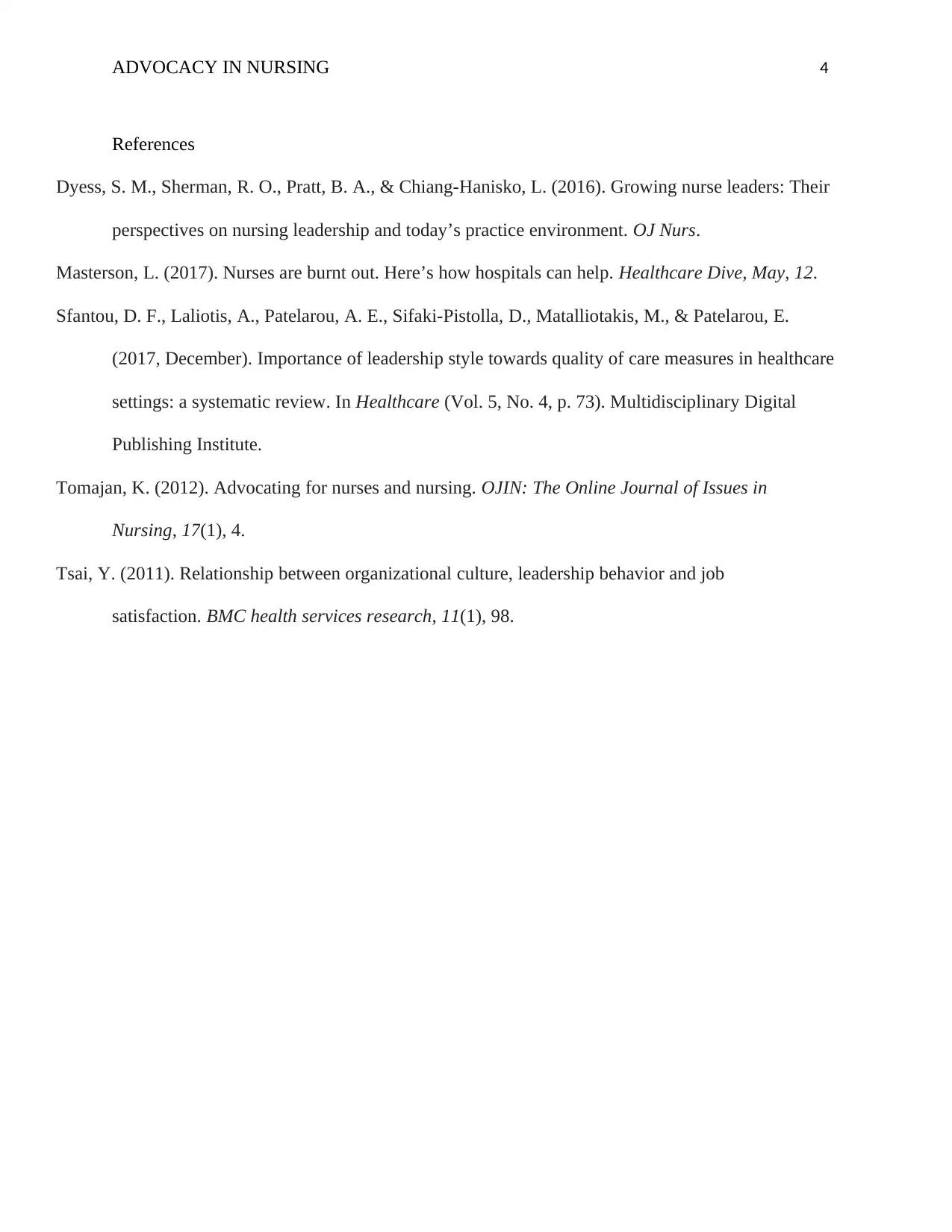Advocacy in Nursing: Nurse Leaders, Barriers, and Strategies Report
VerifiedAdded on 2022/08/16
|4
|787
|14
Report
AI Summary
This report examines the critical role of advocacy within the nursing profession, emphasizing the impact of nurse leaders on patient care and employee satisfaction. It highlights the multifaceted ways nurse leaders support their staff, including involvement in decision-making, resource protection, and mentorship. The report explores how organizational culture, such as communication breakdowns and high employee turnover, can hinder a nurse leader's effectiveness. Furthermore, it suggests strategies for healthcare facilities to meet new expectations in the nursing profession, such as lowering nurse-to-patient ratios, updating technology, collecting employee feedback, and adopting democratic leadership styles to improve working conditions and patient outcomes. The report underscores the importance of these strategies in creating a supportive environment for nurses and ensuring high-quality patient care.
1 out of 4











![[object Object]](/_next/static/media/star-bottom.7253800d.svg)